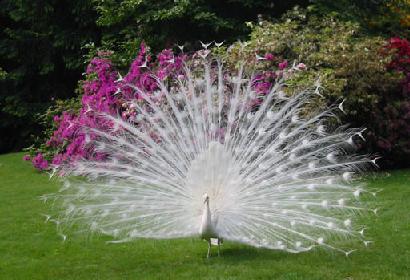 [S]
[S]
Albino Animals - Birds
by Grandpa Cliff Jan 23, 2006, revised May 4, 2011
 [S]
[S]
Male Peacock
It is an example of a white (leucistic) form
There are 9 webpages about albinos on Grandpa Cliff's Science Website for Teenagers.
Read the Introduction in order to learn how albinos are different from white (leucistic) forms of animals.
Introduction - gives facts about albinos, and contains a list of all photos of albinos on this website
Mammals - part 1 Primates & Hoofed Animals
Mammals - part 2 Carnivores
Mammals - part 3 Rodents & Insectivores
Mammals - part 4 (miscellaneous)
__________________________________________________________________
Photos of the following albino and white birds can be found below. They are arranged alphabetically.
Birds
Budgerigar (Budgie, Parakeet) (2)
Cardinal, Northern
Dove
Hummingbird, Ruby-throated (4)
Lovebird
Owl (2)
Peacock (2)
Penguin, African
Robin, American
Sparrow, House
_________________________________________________________________
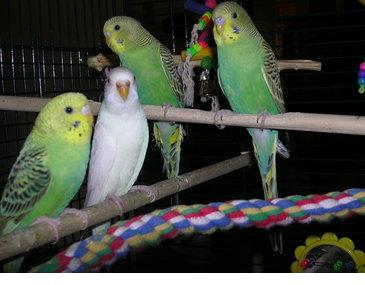 [S]
[S]
Budgerigar (Budgie, Parakeet).
This white (leucistic) bird has the normal yellow beak.
It is the mother of the three other birds.
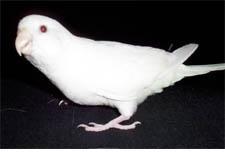 [S]
[S]
Budgerigar (Budgie, Parakeet). Albino with pink eyes, beak and feet.
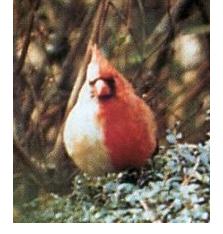 [S]
[S]
A male Northern Cardinal, half white and half normal coloration.
A very unusual bird.
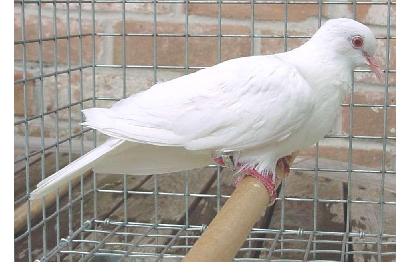 [S]
[S]
Albino Dove with pink eyes, beak, and feet.

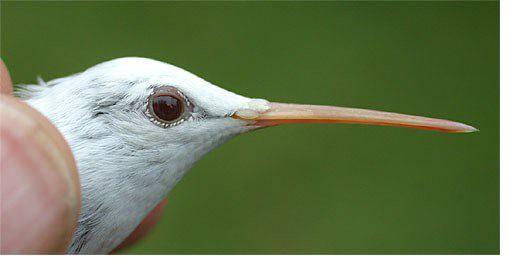
Ruby-throated Hummingbirds with dark eyes, so these are the white (leucistic) form.
The beak is normally dark in color, as is the case with the bird on the left.
The one on the right has a pink bill. [S]
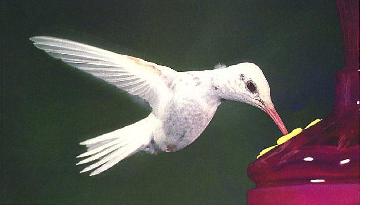
Ruby-throated Hummingbird with pink bill. If the eye is also pink, it is an albino.
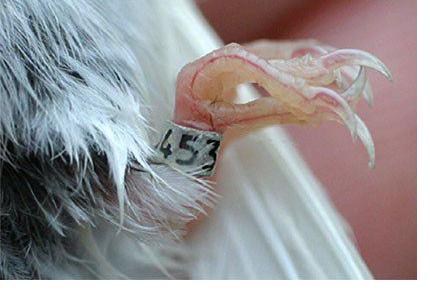 [S]
[S]
The foot of this Ruby-throated Hummingbird shows why
the feet of albino birds can look pink. Without any
pigmentation, we can actually see the blood vessels. [S]
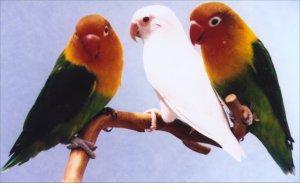 [S]
[S]
Fischer's Lovebird
The middle bird is supposed to be the offspring of the other two birds.
Eye color is not always easy to tell from photographs.
This bird may have pink eyes and be an albino.
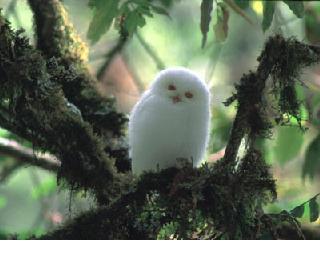 [S]
[S]
This owl in Costa Rica (Central America) appears to be an albino.
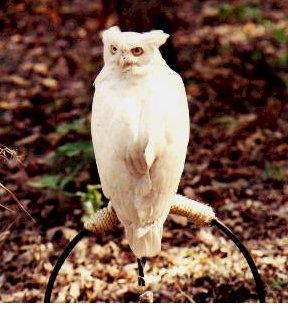 [S]
[S]
Great Horned Owl. It has yellow irises, which is the normal color.
This is the white (leucistic) form.

Red-tailed Hawk in Loudonville, Ohio (partial albino). The eyes are pink.
(photo taken March 15, 2008 by Pennola Nolan)
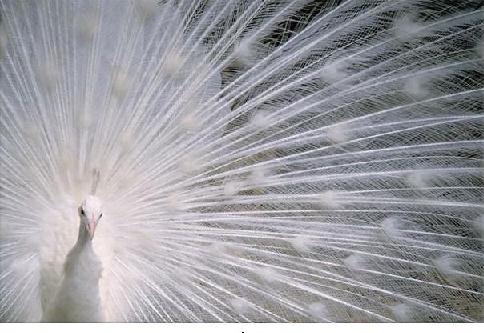 [S]
[S]
Peacock (male). This is the white (leucistic) form.
 This
is an African Penguin, but it is more commonly called the Jackass Penguin because of
the braying-like sound that it makes. A normal individual can be seen at the upper left of the
photo. In the wild, these penguins are found only on offshore islands
and the coast of southwestern Africa in the countries of
South Africa and Namibia.
This
is an African Penguin, but it is more commonly called the Jackass Penguin because of
the braying-like sound that it makes. A normal individual can be seen at the upper left of the
photo. In the wild, these penguins are found only on offshore islands
and the coast of southwestern Africa in the countries of
South Africa and Namibia.
[S]
"Snowdrop" was born in the Bristol Zoo, Bristol, England. This albino penguin has pink facial skin, eyes, and feet, as well as a light beak and wing. The pink eye looks dark in this photo, but there is a better view showing Snowdrop and its normally-colored friends being fed fish from a pail. Read more about the African Penguin, a bird that swims underwater.
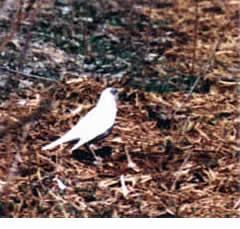 [S]
[S]
An American Robin that had been feeding with other Robins.
This white (leucistic) form is dark around the eye and has the normal yellow beak.
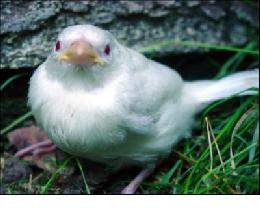 [S]
[S]
A white (leucistic) House Sparrow with pink eyes, beak, legs, and feet. In its natural colors, it is a common
bird in much of the world. This one is a baby, since it has the yellow corners of the mouth that are
common to baby birds. When they open their mouths, this coloration stimulates the
parent to feed the young bird. My thanks to Peter Reinhard of Germany,
a breeder of sparrows, for confirming the identification.
_________________________________________________________________
Visitors since 30
Dec 2006
Go to Grandpa Cliff's Science Website for Teenagers